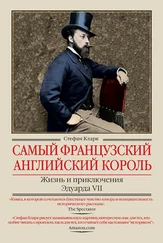Стефан Кларк - 1000 Years of Annoying the French
Здесь есть возможность читать онлайн «Стефан Кларк - 1000 Years of Annoying the French» весь текст электронной книги совершенно бесплатно (целиком полную версию без сокращений). В некоторых случаях можно слушать аудио, скачать через торрент в формате fb2 и присутствует краткое содержание. ISBN: , Издательство: Transworld Digital, Жанр: Старинная литература, на английском языке. Описание произведения, (предисловие) а так же отзывы посетителей доступны на портале библиотеки ЛибКат.
- Название:1000 Years of Annoying the French
- Автор:
- Издательство:Transworld Digital
- Жанр:
- Год:неизвестен
- ISBN:9781407067629
- Рейтинг книги:3 / 5. Голосов: 1
-
Избранное:Добавить в избранное
- Отзывы:
-
Ваша оценка:
- 60
- 1
- 2
- 3
- 4
- 5
1000 Years of Annoying the French: краткое содержание, описание и аннотация
Предлагаем к чтению аннотацию, описание, краткое содержание или предисловие (зависит от того, что написал сам автор книги «1000 Years of Annoying the French»). Если вы не нашли необходимую информацию о книге — напишите в комментариях, мы постараемся отыскать её.
1000 Years of Annoying the French — читать онлайн бесплатно полную книгу (весь текст) целиком
Ниже представлен текст книги, разбитый по страницам. Система сохранения места последней прочитанной страницы, позволяет с удобством читать онлайн бесплатно книгу «1000 Years of Annoying the French», без необходимости каждый раз заново искать на чём Вы остановились. Поставьте закладку, и сможете в любой момент перейти на страницу, на которой закончили чтение.
Интервал:
Закладка:
This, anyhow, is what the Bayeux Tapestry was assumed to be. But what makes it so fascinating is that it didn’t quite turn out that way.
For one thing, the job of putting the Conquest into pictures was given to Anglo-Saxon seamstresses, who were famous throughout Europe for the quality of their embroidery, and seem to have taken the opportunity to add in lots of jokes. To make things even more complicated, the story itself would appear to have been told by someone who wanted to undermine everything William had done.
The best way to get to the root of all this is to try and unpick the tangled threads of the tapestry, and compare the Franco-Norman propaganda that has come down through history with another, perhaps more credible, telling of events. Let’s take things step by step …
Step 1: The Duke who would be King
By the 1050s, William, now Duke of Normandy, had fought off Breton and Frankish invaders and quelled Norman rebels. Possibly inspired by the mistake that his late uncle Richard had made in capturing Falaise Castle and then letting his brother come and murder him, William had developed a simple but effective strategy for dealing with enemies. Instead of bashing down their portcullises, claiming their chateaux as his own, and then going home to be poisoned or otherwise assassinated, William would pursue aggressors or anyone he felt like attacking until he either killed them or seized all their riches and rendered them totally powerless. Pretty soon, word had got round that it was not a good idea to annoy William unless you were sure of being able to take him out, which was a slim possibility given that he had a personal army of highly trained knights and was himself a fearsome fighter.
William was also intensely ambitious, and had long had his eye on England. Under the Anglo-Saxons, it had become a rich, stable country, but things had changed since Alfred the Great’s day: the Scandinavians were raiding again, and the King of England, Edward the Confessor, was weak and under the thumb of warring earls. There was room for a strong man like William to step in and seize power.
Moreover, William knew that he might not have to do much fighting. King Edward was married to the daughter of one of the warring Anglo-Saxon earls, but he had taken a vow of chastity, and he had no direct heir. Edward was William’s father’s cousin, so in theory William had a claim to the English throne. In addition, Edward owed a debt of sorts to Normandy, because he had taken refuge there during the reign of King Cnut. 4And just as Brits who have lived in France come home with a taste for almost-raw steak and unpasteurized cheese, Edward had a fondness for all things Norman, and surrounded himself with Norman courtiers. All in all, it was a situation that the ambitious William couldn’t afford to ignore.
William duly went to visit his royal cousin Edward, and, according to Norman chroniclers, the trip confirmed his feelings about England: ‘When William saw what a green and pleasant land it was, he thought he would very much like to be its king.’ Yes, a cynic might add, green, pleasant and full of treasure, valuable farmland and taxpayers.
It was during this state visit that Edward is supposed to have appointed the young Norman as his official successor to the English throne. And if you go to the vast former monastery in Bayeux that now houses the tapestry, you will be informed categorically that this was the case: William was the only rightful claimant to Edward’s crown, because Edward himself had said so.
This is an opinion that was first recorded in the 1070s by the chronicler William of Poitiers, a friend of the Conqueror whose account of the Conquest is about as reliable as a biography of Genghis Khan published by Mongolians R Us Books. And it is this version of events that the modern-day Normans in Bayeux would still have us believe.
But it’s a false premise, because, according to eleventh-century Anglo-Saxon law, the successor to the English throne had to be approved by a ‘wise men’s council’ of bishops and earls, known as the Witangemot. Edward had no right to pass on his crown. His promise, if it really existed, was probably part of a deal – he no doubt wanted to buy William’s support if he had to go to war to hang on to his crown. Edward, a Norman on his mother’s side, was unpopular with his Anglo-Saxon subjects. As well as his Norman courtiers, he had brought in Norman sheriffs to rule parts of England – foreign noblemen who spoke no Anglo-Saxon and didn’t have a clue about local customs. The Anglo-Saxon earls, who ruled over vast swathes of the English countryside, were in a semi-constant state of rebellion against the presence of these foreign lawmakers, and were also jostling for position to take over the throne.
The most powerful of the earls, Godwin of Wessex, had his eyes set firmly on the seat of power. He had married his daughter Edith to Edward, and was understandably annoyed that the union produced no princes. It was even rumoured that Edward had taken his vow of celibacy just to frustrate Godwin.
Godwin was virulently anti-Norman. In 1051, a group of Normans got into a fight in Dover and – having far less experience than the English of town-centre brawling after the pubs closed – came off worse. Several of the Normans were killed, and King Edward ordered Godwin to go and punish the townsfolk for being so inhospitable to his foreign friends. Godwin not only refused but thought that this Norman-bashing sounded fun, and declared war on Edward’s continental cronies. He marched an army to London, where he received a hero’s welcome from the people, and suddenly it was much less fashionable in England to be a Norman.
Godwin demanded that the foreign courtiers be sent home, and Edward was forced to comply. One can imagine the poor King sitting forlornly in his palace, deprived of his Norman playmates, begging his minstrels to play ‘Je ne regrette rien’. Not surprisingly, it was around this time that he supposedly pledged the throne to William.
There was one consolation for Edward, though. Godwin had a dashing young son – the handsome, blond Harold Godwinson – and Edward liked handsome young men. (There are other theories about his lack of children, aside from his piety.) So, in the early 1060s, apparently forgetting his earlier promise to William, Edward elected Harold his new favourite. The brave, warlike young Anglo-Saxon, popular not only with the King but also with the Witangemot and the people, began to look like a very probable candidate for the throne of England.
On the other side of the Channel, however, someone wasn’t happy …
Step 2: A hostage is just a guest who can’t go home yet
For a man whose family had spent years saying rude things about the Normans, Harold Godwinson now did a remarkably rash thing. In 1064, accompanied by only a few companions and his hunting dogs, he came to Normandy. It was a bit like Martin Luther King turning up at a Ku Klux Klan barbecue. And the question is, why would a man from such a politically astute and active family do such a brainless thing?
At the Bayeux Tapestry museum, you will be told one possible answer. The museum’s audio-sets are an invaluable aid to interpreting the tapestry for anyone who can’t read the Latin inscriptions and isn’t an expert in early medieval iconography. The story of the Conquest is told by an Englishman with the sort of old-fashioned radio voice that used to tell people in the middle of World War Two that ‘if Jerry pokes his nose across the Chennel , we’ll give him a jolly good threshing .’ You can’t help but believe him as he informs you that Harold came to Normandy with a message from the ageing King Edward the Confessor, confirming that he wanted William as his successor after all.
Читать дальшеИнтервал:
Закладка:
Похожие книги на «1000 Years of Annoying the French»
Представляем Вашему вниманию похожие книги на «1000 Years of Annoying the French» списком для выбора. Мы отобрали схожую по названию и смыслу литературу в надежде предоставить читателям больше вариантов отыскать новые, интересные, ещё непрочитанные произведения.
Обсуждение, отзывы о книге «1000 Years of Annoying the French» и просто собственные мнения читателей. Оставьте ваши комментарии, напишите, что Вы думаете о произведении, его смысле или главных героях. Укажите что конкретно понравилось, а что нет, и почему Вы так считаете.












